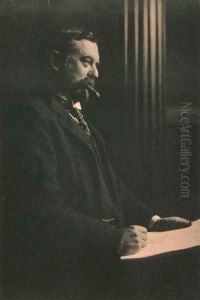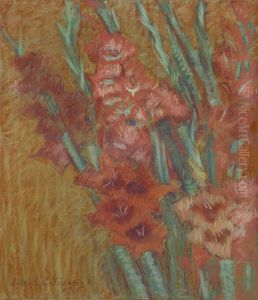Sarah Choate Sears Paintings
Sarah Choate Sears was an American artist, photographer, and patron of the arts born on May 5, 1858, in Cambridge, Massachusetts. She was a prominent figure in the pictorialist photography movement at the turn of the 20th century. Coming from a comfortable upper-middle-class family, Sears had the resources and leisure to pursue her artistic interests.
Sears married businessman and philanthropist J. Montgomery Sears in 1877, and with her marriage, she gained access to Boston's elite social circles and the burgeoning arts scene of the time. She began her artistic career as a painter but shifted her focus to photography in the 1890s, intrigued by its potential as an art form.
A self-taught photographer, Sears quickly gained recognition for her work. She was associated with the Photo-Secession, a movement led by Alfred Stieglitz that aimed to elevate photography to the status of fine art. Her photographs were often soft-focused and dreamy, reflecting the pictorialist style that emphasized beauty, tonality, and composition over sharpness and detail. She also experimented with different printing processes, such as platinum and gum bichromate prints, which allowed for greater manipulation of the image and a more painterly effect.
Sears's work was exhibited at various prestigious venues, including the Paris Universal Exposition of 1900, where she received an honorable mention. She was also an active member and exhibitor with the Boston Camera Club and had her work published in 'Camera Work,' a quarterly photographic journal edited by Stieglitz.
Beyond her work as a photographer, Sarah Choate Sears was a significant art collector and patron, supporting various artists and causes. She amassed an impressive collection that included works by Mary Cassatt, among others, and was instrumental in fostering the appreciation of Impressionism and other modern art movements in the United States.
Sears's contributions to the arts were not limited to her own creation and collection; she was also involved in philanthropic endeavors. She supported the Museum of Fine Arts, Boston, and other institutions, helping to shape the cultural landscape of her time.
Sarah Choate Sears's influence waned in the later years of her life, and she eventually turned away from photography. She passed away on September 25, 1935, in Boston, Massachusetts. Though not as well-known today as some of her contemporaries, her work remains an important part of the history of American photography and the pictorialist movement.

